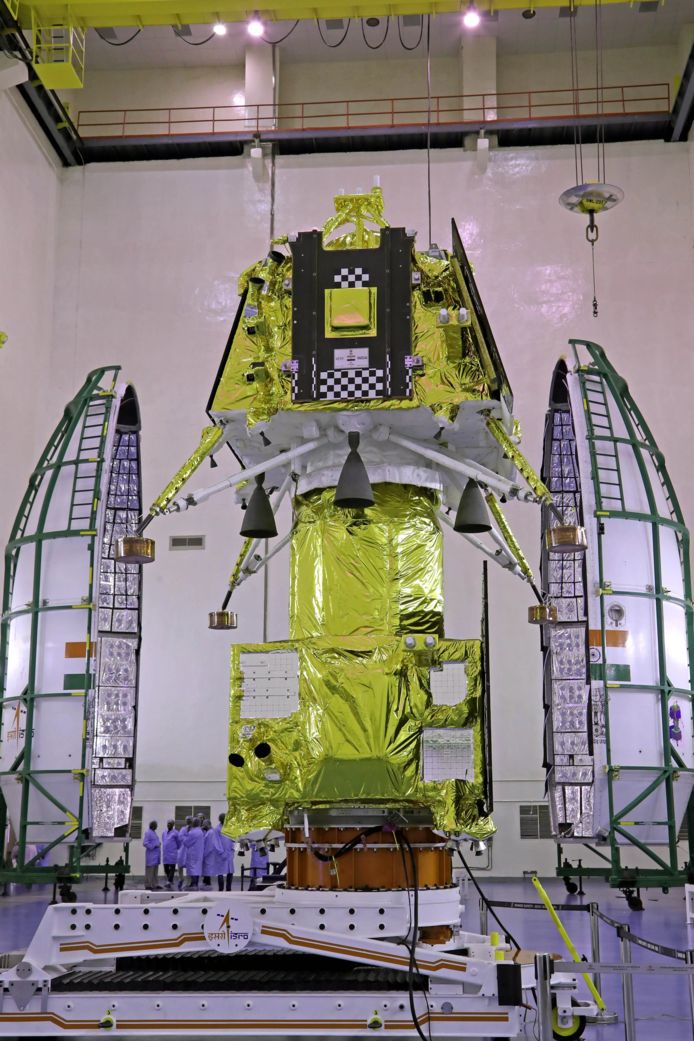Tomorrow is today. On Wednesday, August 23, the Indian Space Research Organization (ISRO) will attempt to land a lunar rover in the Chandrayaan 3 mission. If successful, it will also make the first landing on the lunar south pole after Russia’s recent failure. Exciting times for India and space travel. Third time is the charm?
For 47 years, no one outside of China had succeeded in landing on the moon. The last successful landing occurred in 1976 when Russia’s Luna 24 mission returned moon rocks to Earth using a robotic spacecraft. Since then, only China has been able to reach the surface of the moon. It has done so three times, including the first controlled landing on the far side of the Moon. In recent years, Israeli and Japanese teams have made another attempt, but they all failed while landing on the moon.
Exciting times for the Indian Space Agency, which is going to try it out tomorrow. The Chandrayaan-3 spacecraft prepares to land on the moon on Wednesday, 4 days after Russia’s Luna 25 lander failed to do so. If all goes according to plan, Vikram, as the Chandrayaan-3 lander is called, will softly touch down on the lunar surface tomorrow at 2:34 pm Belgian time.
Chandrayaan 3 has already taken some beautiful pictures of the lunar surface using the lander’s module camera
As the name suggests, this is the third mission in the Indian space program to explore the moon. India’s previous failed landing attempts, Chandrayaan 1 and 2, took place in 2008 and 2019. The cost of the new Chandrayaan-3 mission, which began with launch on July 14, is about 80 million euros. That in itself is a low cost for a research mission, compared to the cost of launching a SpaceX Falcon 9.
If the Vikram lander successfully lands on the moon’s south pole, it will launch the small Pragyan spacecraft. The solar-powered mobile robot will use scientific tools to study the chemical composition of the lunar surface. Bergian will do this for about 14 days. After all, this is how long the “lunar day” lasts. After that, the sun sets on the landing site and the temperature drops, making the spacecraft inoperable.
Read more below the image.

Other science experiments will also be conducted during the mission, such as measuring moonquakes and laser distances on the moon. For example, the results of these measurements could help determine future landing sites or build a base on the moon. For the latter, the moon’s south pole is particularly interesting because of the presence of craters that are permanently shrouded in shadow. Water has already been observed in the form of ice from above, which is essential if a base is to be constructed. This is also one of the reasons why NASA’s Artemis III mission aims to walk on the south pole of the moon within a few years.
Will India become the fourth country to land on the moon after the Soviet Union, the United States and China? And the first in Antarctica? We’ll know tomorrow. And scientists from all over the world are already hoping for a good result.
You can find all our news about science at hln.be/science-en-planet/
Russia wants to capture the south pole of the moon, but the spacecraft crashes. “He who controls the orbits of the earth and the moon is the one who controls,” says the expert (+)
A Chinese startup beats Elon Musk’s SpaceX: the first successful launch of a methane rocket
The spacecraft flies into space today: “Large cargo space and the possibility of reuse will lower the prices of space missions” (+)
Unlimited free access to Showbytes? Which can!
Log in or create an account and never miss a thing from the stars.
